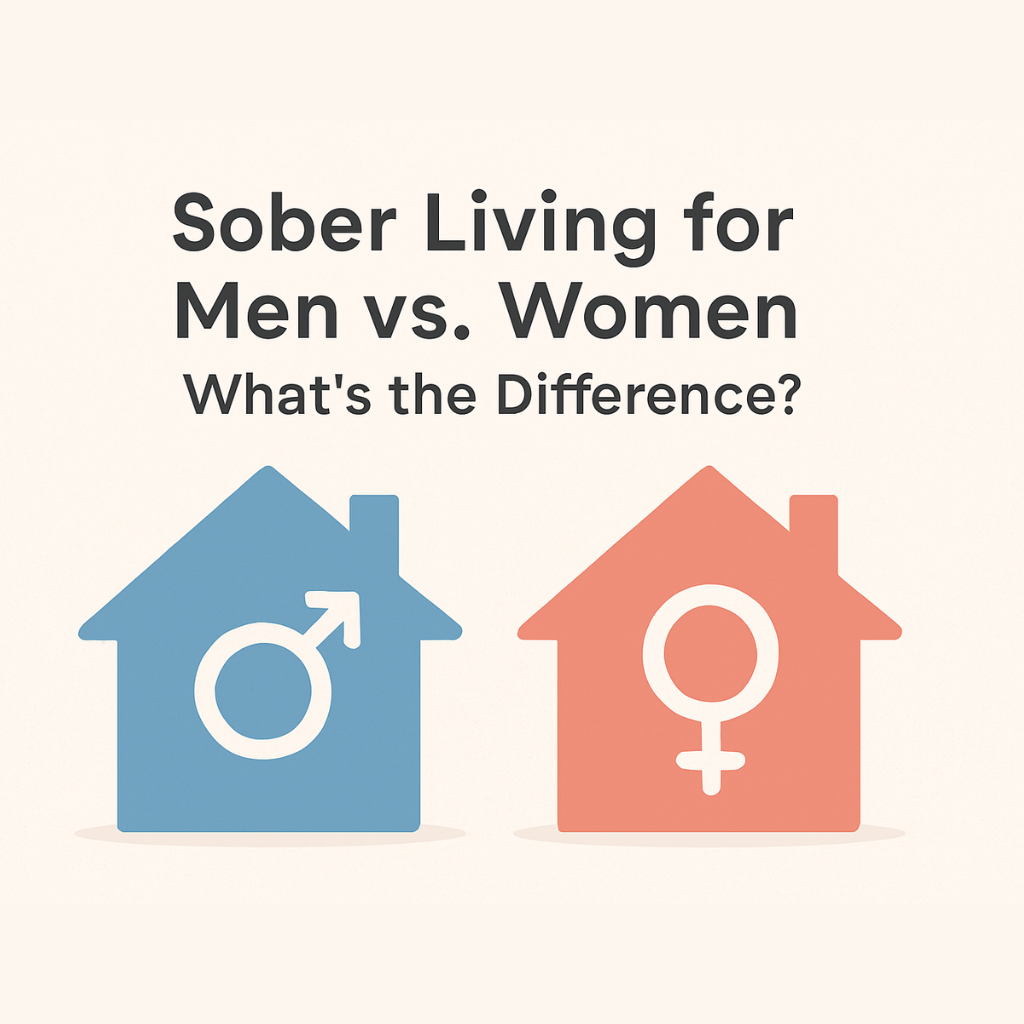Home » Sober Living for Men vs. Women: What’s the Difference?
Recovering from addiction is a deeply personal journey and the environment in which one heals can significantly influence the process. If you land in the wrong sober living environment, you may find that you are less inclined to fully recover and maintain your sobriety long-term. It’s important to consider what you need to support your individual recovery goals and needs for support before you decide which home is right for you.
One crucial step in this process involves deciding whether you want to live in a co-ed environment or opt for a sober living home that is gender-specific. While a co-ed home may offer more opportunity for socialization and support across genders, this type of recovery environment may not be the right choice for every individual. On the other hand, gender-specific sober living homes offer tailored support, recognizing the distinct challenges and needs that men and women may face during their recovery process.
But how do these homes differ between men and women? What do they do specifically to help foster healing, growth and community for the men and women residing there? Understanding the differences between men’s and women’s sober living environments can help make informed decisions about their recovery paths. Keep reading to discover more about these key differences and how choosing a gender-specific sober living home can help facilitate your recovery process.
Why Choose Gender-Specific Sober Living?
Gender-specific sober living homes can help create spaces that allow individuals to focus on recovery without the distractions or pressures that can come from co-ed living. These homes often address gender-specific issues, providing targeted support that also acknowledges the unique experiences that men and women go through before, during and after their recovery process.
For example, women may find that they benefit from an environment that emphasizes trust and emotional connection. On the other hand, men may feel more value in settings that provide practical strategies for recovery and focus on peer accountability. By catering to different needs, gender-specific homes can enhance the effectiveness of the recovery process.
What Are the Key Differences in Support Services They Offer?
Men’s sober living homes and women’s sober living homes often offer support services that are tailored to their residents’ specific needs. Men’s homes may focus on anger management, building accountability and developing life skills, whole women’s homes may emphasize emotional support, building self-esteem and trauma-informed care. These targeted series help to address any underlying issues that may be contributing to substance use, providing residents with the tools that they need to maintain long-term sobriety.
How Does the Environment Differ?
The community dynamics within gender-specific living homes can vary significantly. Women’s homes often foster a nurturing environment that encourages open communication and mutual support. In contrast, men’s homes may focus on structure, discipline and peer mentorship. However, it’s important to note that these environments do vary from home to home, based on the individual practices of the sober living home. It’s important to take the time to visit any potential sober living residence or meet with the residents themselves to determine whether the environment is a fit for your needs and individual goals.
Are There Any Differences in House Rules and Expectations?
While the core principles of sobriety, accountability and mutual respect are consistent across all sober living homes, the specific rules and expectations can differ between men’s and women’s residences. These differences can fall in the realms of curfews, chore assignments and general guidelines for interpersonal interactions. However, much like the differences in environments, it’s important to note that these do vary from home to home, even amongst gender-specific sober living residences.
How Does the Location Influence the Experience?
The location of a sober living home can have a direct impact on the recovery experience for both men and women. Always consider what you are looking for in the environment around your sober living home as a part of the recovery process. For example, Monarch Recovery Centers’ homes in San Francisco and Sacramento offer residents access to the vibrant communities and amazing employment opportunities around them while still offering vital support services. These homes often serve as a step-down from inpatient rehab, offering continued support without the full-time structure. This provides residents with the opportunity to rebuild their lives in sobriety within environments rich with resources and cultural experiences.
How Does the Intensive Outpatient Program (IOP) Play In?
In addition to a sober living home, there is another option that can play a crucial step in recovery – the Intensive Outpatient Program. These programs often complement sober living homes, offering structured therapy sessions designed to support individuals as they transition back into daily life. These sessions often include group therapy, individual counseling and educational workshops that are more flexible, allowing residents to attend while also maintaining other commitments such as work, school and family. IOP programs at Monarch Recovery Centers — a licensed treatment facility in Sacramento — can be either co-ed or gender-specific, and aim to help to reinforce skills learned in sober living homes, providing sustained recovery and personal growth.
What Should You Consider in a Sober Living Home?
While choosing between a co-ed and gender-specific sober living home is one aspect of deciding where to recover, there are many other aspects that go into choosing the right sober living residence to suit your needs. Consider the type of support services offered, the community environment and house rules, the location and whether it aligns with your personal recovery goals and lifestyle preferences.
For a deeper dive on questions to ask when considering a sober living home, visit our recent blog post, “Top Questions to Ask Before Moving Into a Sober House.”
Choosing the Right Sober Living Home for Your Journey
There’s no doubt that choosing the right sober living home is a critical step in the journey to recovery. Gender-specific homes offer tailored support that acknowledges and addresses the unique challenges that are faced by both men and women. While the services do not differ greatly among men’s sober living homes and women’s sober living homes, their approach to recovery can differ in how services are provided, the environments within the homes and expectations for house rules and responsibilities.
Whether you are interested in co-ed living or considering a gender-specific sober living home, it’s important to remember that where you land is a crucial part of your recovery process. At Monarch Recovery Centers, our sober living homes in San Francisco and Sacramento coupled with our Intensive Outpatient Program (IOP) helps to provide comprehensive support to empower you along your path to lasting sobriety.







